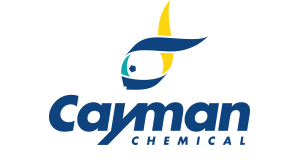Glucagon Receptor Extracellular Domain (human, recombinant)
Glucagon Receptor Extracellular Domain (human, recombinant)
Artikelnummer
CAY42231-100
Verpackungseinheit
100 µg
Hersteller
Cayman Chemical
Verfügbarkeit:
wird geladen...
Preis wird geladen...
Shelf life (days): 365.0
Formulation: Lyophilized from sterile PBS, pH 7.4
Uniprot ID: P47871
Purity: ≥95% estimated by SDS-PAGE
Formula Weight: 0.0
Notes: Glucagon receptor (GCGR) is a transmembrane glycoprotein and class B G protein-coupled receptor (GPCR).{51906,51907} It is composed of an N-terminal extracellular domain required for ligand binding, seven transmembrane domains, and a C-terminal intracellular domain.{51908} It is expressed primarily in the liver and kidney but is also found in a variety of other areas, including adipose tissue and the pancreas, heart, gastrointestinal tract, and brain.{51908,51907,51906} Under hypoglycemic conditions, GCGR is activated by increased levels of glucagon and induces Gαs signaling, which initiates the transcription of enzymes involved in gluconeogenesis and the activation of enzymes involved in glycogenolysis to increase blood levels of glucose.{51906} A glycine-to-serine mutation at position 40 of GCGR (GCGRG40S) decreases its affinity to glucagon and is associated with type 2 diabetes.{51909} Inactivating mutations in GCGR are associated with pancreatic α-cell hyperplasia, hyperaminoacidemia, and hyperglucagonemia but not hypoglycemia.{51906,51910,51911} Cayman's Glucagon Receptor Extracellular Domain (human, recombinant) protein can be used for binding assays. This protein consists of 122 amino acids, has a calculated molecular weight of 14.5 kDa, and a predicted N-terminus of Ala26 after signal peptide cleavage. By SDS-PAGE, under reducing conditions, the apparent molecular mass of the protein is approximately 36 kDa due to glycosylation.
Formulation: Lyophilized from sterile PBS, pH 7.4
Uniprot ID: P47871
Purity: ≥95% estimated by SDS-PAGE
Formula Weight: 0.0
Notes: Glucagon receptor (GCGR) is a transmembrane glycoprotein and class B G protein-coupled receptor (GPCR).{51906,51907} It is composed of an N-terminal extracellular domain required for ligand binding, seven transmembrane domains, and a C-terminal intracellular domain.{51908} It is expressed primarily in the liver and kidney but is also found in a variety of other areas, including adipose tissue and the pancreas, heart, gastrointestinal tract, and brain.{51908,51907,51906} Under hypoglycemic conditions, GCGR is activated by increased levels of glucagon and induces Gαs signaling, which initiates the transcription of enzymes involved in gluconeogenesis and the activation of enzymes involved in glycogenolysis to increase blood levels of glucose.{51906} A glycine-to-serine mutation at position 40 of GCGR (GCGRG40S) decreases its affinity to glucagon and is associated with type 2 diabetes.{51909} Inactivating mutations in GCGR are associated with pancreatic α-cell hyperplasia, hyperaminoacidemia, and hyperglucagonemia but not hypoglycemia.{51906,51910,51911} Cayman's Glucagon Receptor Extracellular Domain (human, recombinant) protein can be used for binding assays. This protein consists of 122 amino acids, has a calculated molecular weight of 14.5 kDa, and a predicted N-terminus of Ala26 after signal peptide cleavage. By SDS-PAGE, under reducing conditions, the apparent molecular mass of the protein is approximately 36 kDa due to glycosylation.
| Artikelnummer | CAY42231-100 |
|---|---|
| Hersteller | Cayman Chemical |
| Hersteller Artikelnummer | 42231-100 |
| Verpackungseinheit | 100 µg |
| Mengeneinheit | STK |
| Produktinformation (PDF) | Download |
| MSDS (PDF) |
|

 English
English










